*NURSING > HESI MED SURG > Med Surg 2021 Hesi practice questions with Rationale Answers. 100% accurate with Guaranteed comprehe (All)
Med Surg 2021 Hesi practice questions with Rationale Answers. 100% accurate with Guaranteed comprehension
Document Content and Description Below
The nurse is assessing a 48-year-old client with a history of smoking during a routine clinic visit. The client, who exercises regularly, reports having pain in the calf during exercise that disappe... ars at rest. Which of the following findings requires further evaluation? 1. Heart rate 57 bpm. 2. SpO2 of 94% on room air. 3. Blood pressure 134/82. 4. Ankle-brachial index of 0.65. - 4 An Ankle-Brachial Index of 0.65 suggests moderate arterial vascular disease in a client who is experiencing intermittent claudication. A Doppler ultrasound is indicated for further evaluation. The bradycardic heart rate is acceptable in an athletic client with a normal blood pressure. The SpO2 is acceptable; the client has a smoking history. An overweight client taking warfarin (Coumadin) has dry skin due to decreased arterial blood flow. What should the nurse instruct the client to do? Select all that apply. 1. Apply lanolin or petroleum jelly to intact skin. 2. Follow a reduced-calorie, reduced-fat diet. 3. Inspect the involved areas daily for new ulcerations. 4. Instruct the client to limit activities of daily living (ADLs). 5.Use an electric razor to shave - 1,2,3,5 Maintaining skin integrity is important in preventing chronic ulcers andinfections. The client should be taught to inspect the skin on a daily basis. The client should reduce weight to promote circulation; a diet lower in calories and fat is appropriate. Because the client is receiving Coumadin, the client is at risk for bleeding from cuts. To decrease the risk of cuts, the nurse should suggest that the client use an electric razor. The client with decreased arterial blood flow should be encouraged to participate in ADLs. In fact, the client should be encouraged to consult an exercise physiologist for an exercise program that enhances the aerobic capacity of the body. A client with peripheral vascular disease has undergone a right femoral-popliteal bypass graft. The blood pressure has decreased from 124/80 to 94/62. What should the nurse assess first? 1. IV fluid solution. 2. Pedal pulses. 3. Nasal cannula flow rate. 4. Capillary refill - 2 With each set of vital signs, the nurse should assess the dorsalis pedis and posterior tibial pulses. The nurse needs to ensure adequate perfusion to the lower extremity with the drop in blood pressure. IV fluids, nasal cannula setting, and capillary refill are important to assess; however, priority is to determine the cause of drop in blood pressure and that adequate perfusion through the new graft is maintained. The nurse is caring for a client with peripheral artery disease who has recently been prescribed clopidogrel (Plavix). The nurse understands that more teaching is necessary when the client states which of the following: 1. "I should not be surprised if I bruise easier or if my gums bleed a little when brushing my teeth." 2. "It doesn't really matter if I take this medicine with or without food, whatever works best for my stomach." 3. "I should stop taking Plavix if it makes me feel weak and dizzy."4. "The doctor prescribed this medicine to make my platelets less likely to stick together and help prevent clots from forming." - 3 Weakness, dizziness, and headache are common adverse effects of Plavix and the client should report these to the physician if they are problematic; in order to decrease risk of clot formation, Plavix must be taken regularly and should not be stopped or taken intermittently. The main adverse effect of Plavix is bleeding, which often occurs as increased bruising or bleeding when brushing teeth. Plavix is well absorbed, and while food may help decrease potential gastrointestinal upset, Plavix may be taken with or without food. Plavix is an antiplatelet agent used to prevent clot formation in clients who have experienced or are at risk for myocardial infarction, ischemic stroke, peripheral artery disease, or acute coronary syndrome. A client is receiving Cilostazol (Pletal) for peripheral arterial disease causing intermittent claudication. The nurse determines this medication is effective when the client reports which of the following? 1. "I am having fewer aches and pains." 2. "I do not have headaches anymore." 3. "I am able to walk further without leg pain." 4. "My toes are turning grayish black in color." - 3 Cilostazol is indicated for management of intermittent claudication. Symptoms usually improve within 2 to 4 weeks of therapy. Intermittent claudication prevents clients from walking for long periods of time. Cilostazol inhibits platelet aggregation induced by various stimuli and improving blood flow to the muscles and allowing the client to walk long distances without pain. Peripheral arterial disease causes pain mainly of the leg muscles. "Aches and pains" does not specify exactly where the pain is occurring. Headaches may occur as a side effect of this drug, and the client should report this information to the health care provider. Peripheral arterial disease causesdecreased blood supply to the peripheral tissues and may cause gangrene of the toes; the drug is effective when the toes are warm to the touch and the color of the toes is similar to the color of the body. The client admitted with peripheral vascular disease (PVD) asks the nurse why her legs hurt when she walks. The nurse bases a response on the knowledge that the main characteristic of PVD is: 1. Decreased blood flow. 2. Increased blood flow. 3. Slow blood flow. 4. Thrombus formation. - 1 Decreased blood flow is a common characteristic of all PVD. When the demand for oxygen to the working muscles becomes greater than the supply, pain is the outcome. Slow blood flow throughout the circulatory system may suggest pump failure. Thrombus formation can result from stasis or damage to the intima of the vessels. The nurse is planning care for a client who is diagnosed with peripheral vascular disease (PVD) and has a history of heart failure. The nurse should develop a plan of care that is based on the fact that the client may have a low tolerance for exercise related to: 1. Decreased blood flow. 2. Increased blood flow. 3. Decreased pain. 4. Increased blood viscosity. - 1 A client with PVD and heart failure will experience decreased blood flow. In this situation, low exercise tolerance (oxygen demand becomes greater than the oxygen supply) may be related to less blood being ejected from the left ventricle into the systemic circulation. Decreased blood supply to the tissues results in pain. Increasedblood viscosity may be a component, but it is of much less importance than the disease processes. [Show More]
Last updated: 1 year ago
Preview 1 out of 53 pages

Reviews( 0 )
Document information
Connected school, study & course
About the document
Uploaded On
May 18, 2022
Number of pages
53
Written in
Additional information
This document has been written for:
Uploaded
May 18, 2022
Downloads
0
Views
74

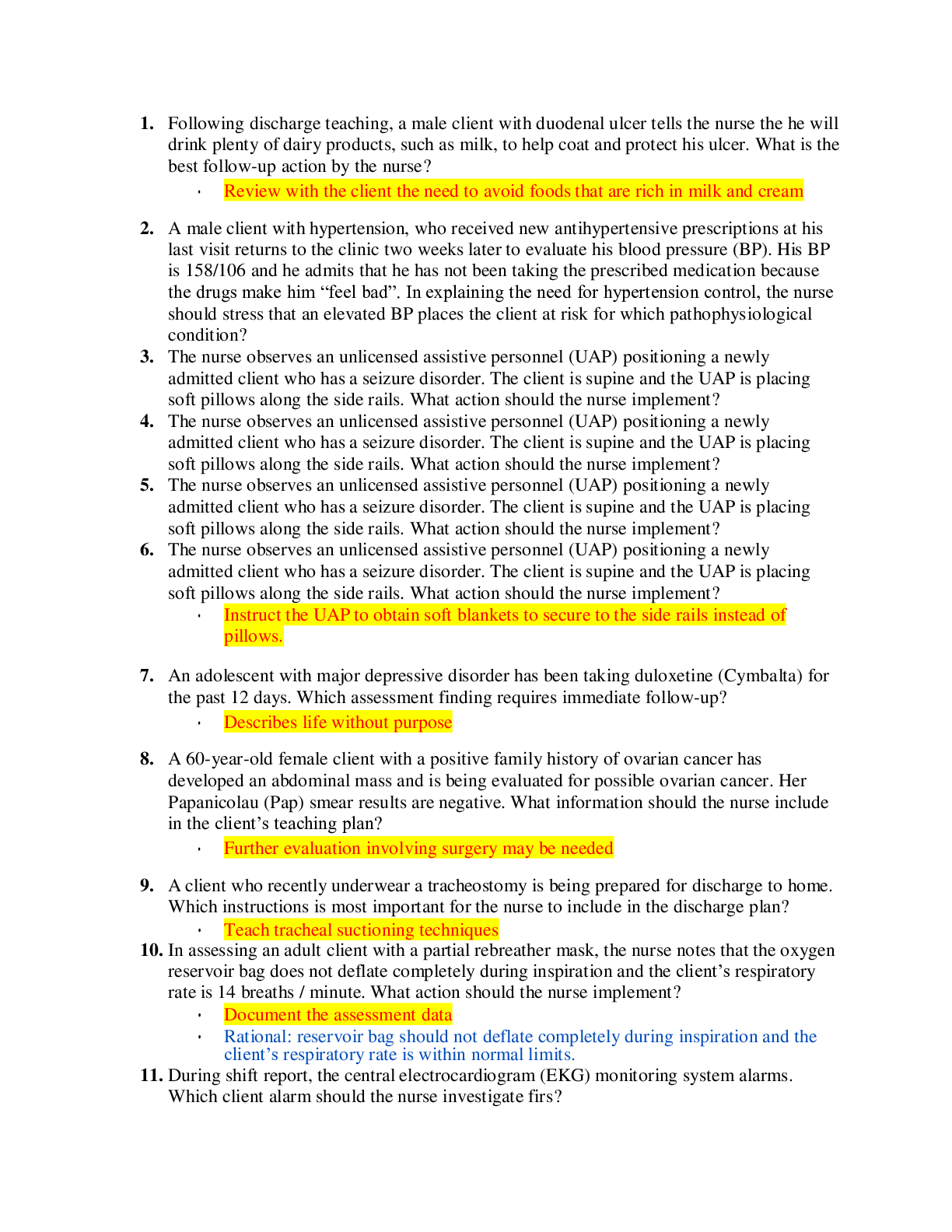

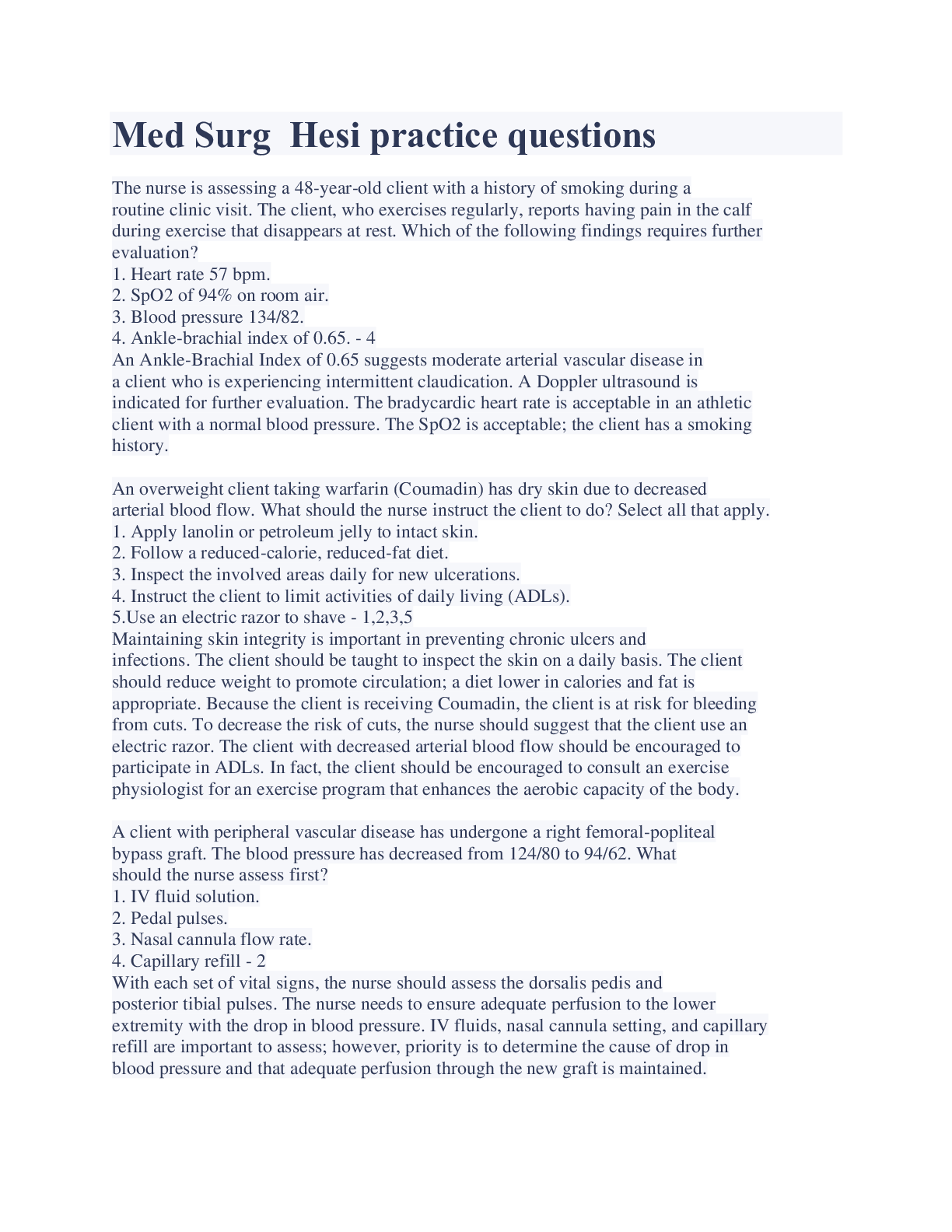

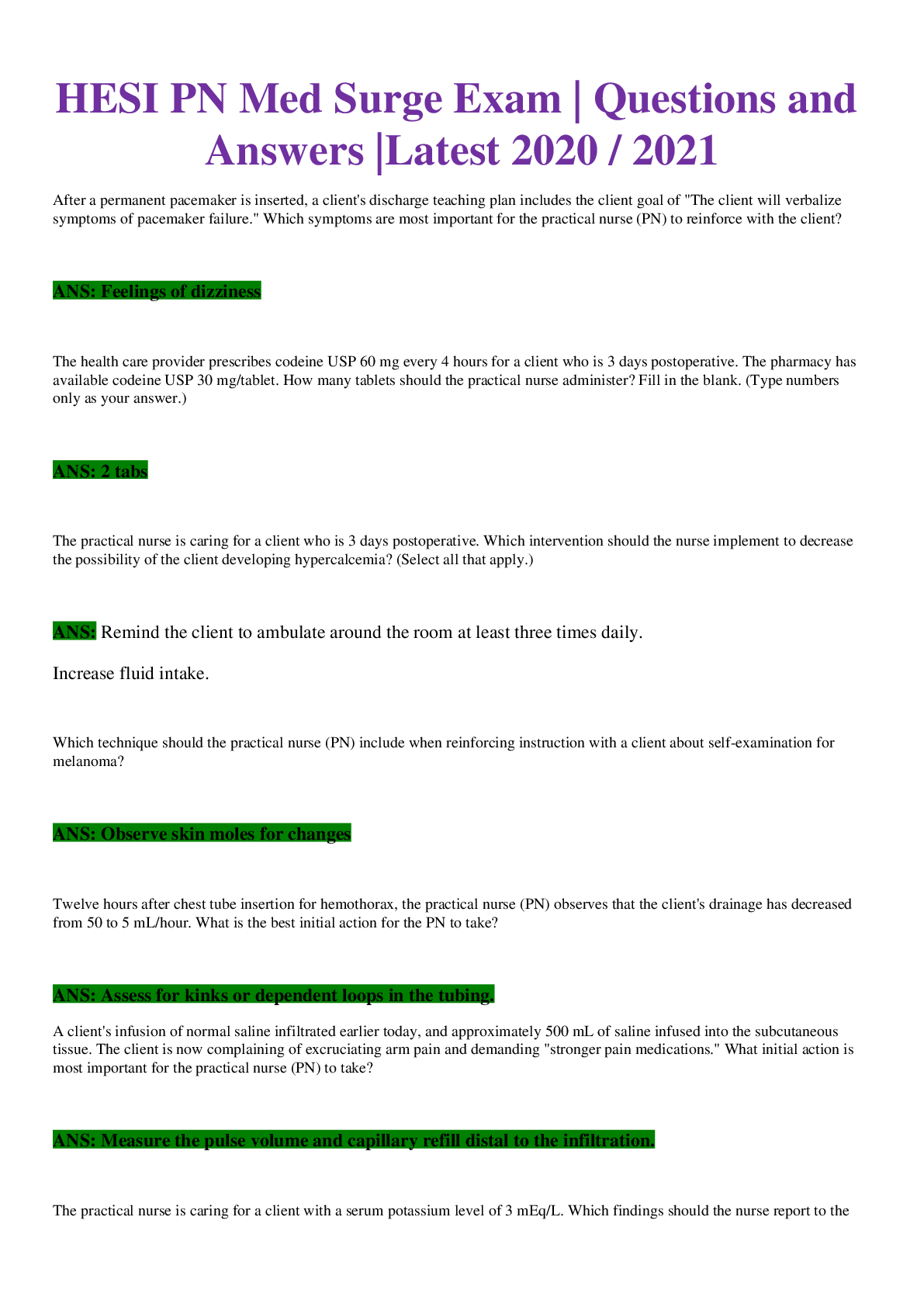

 Test Bank.png)
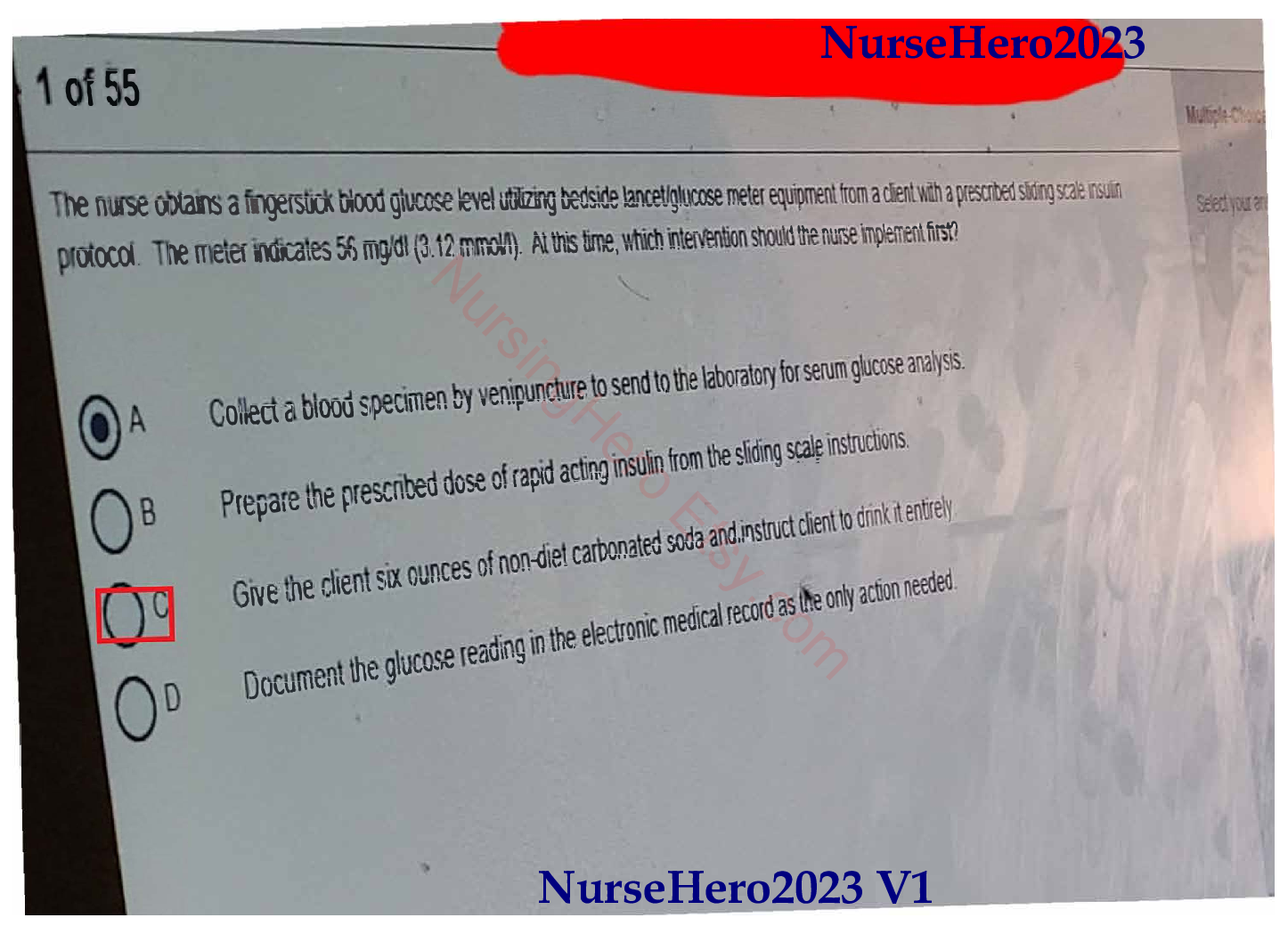


.png)

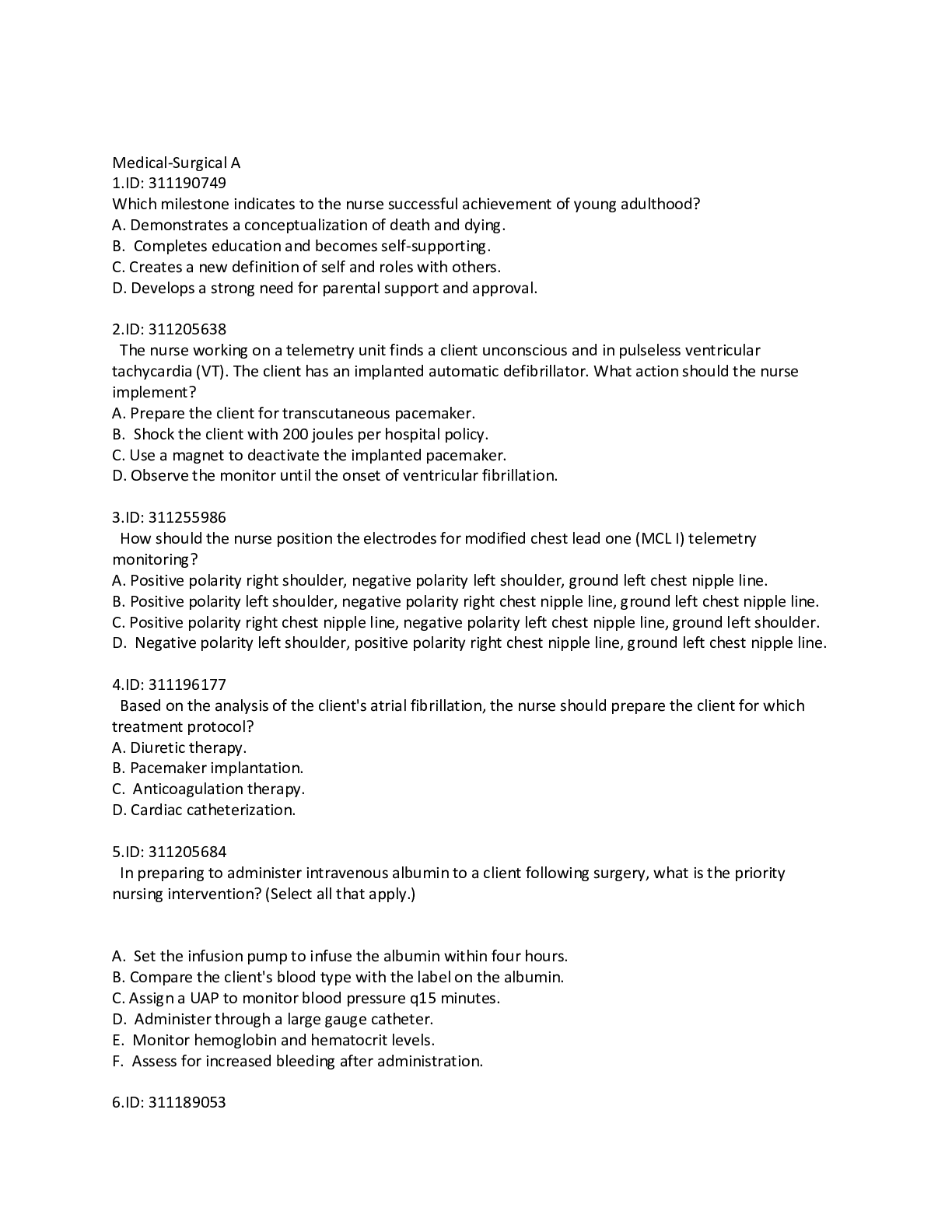

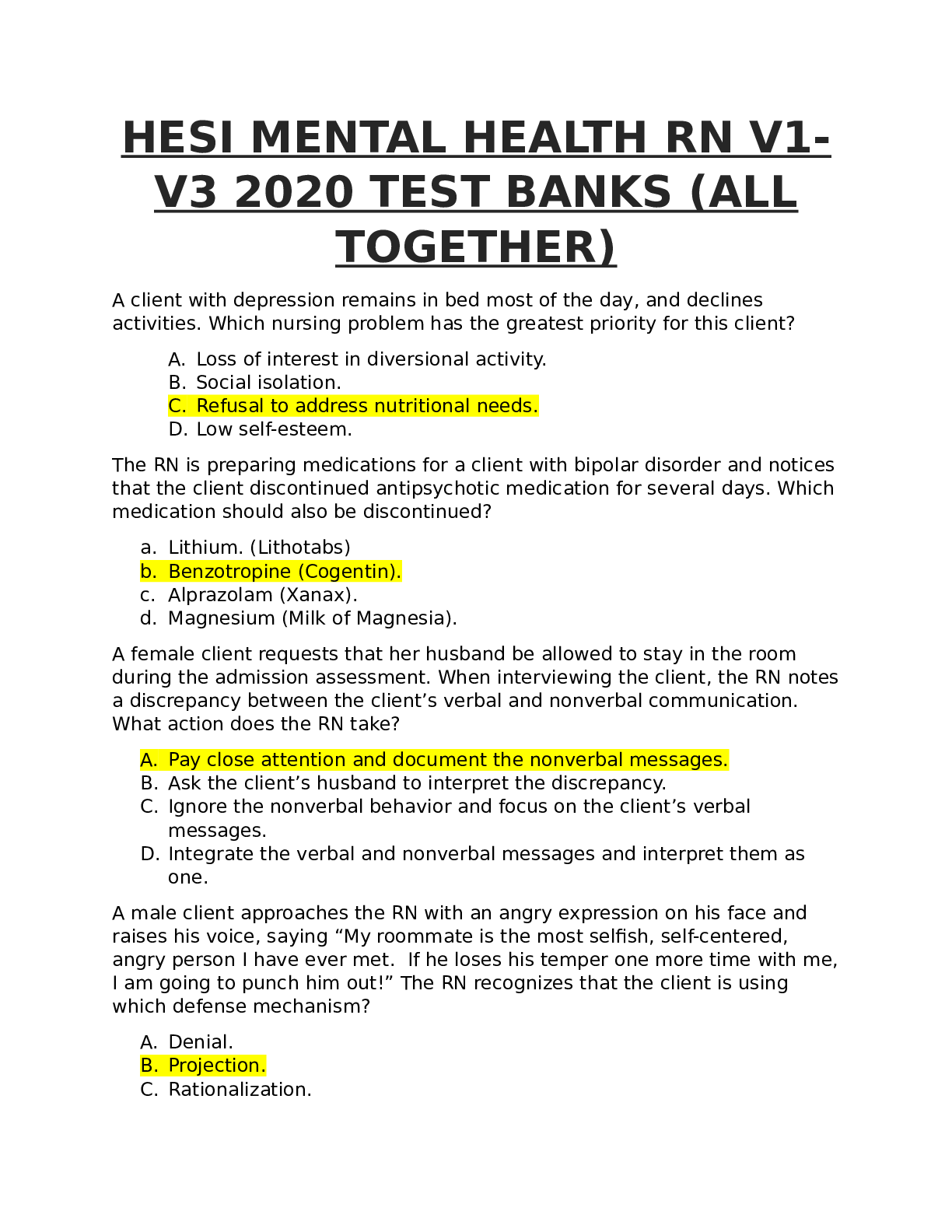
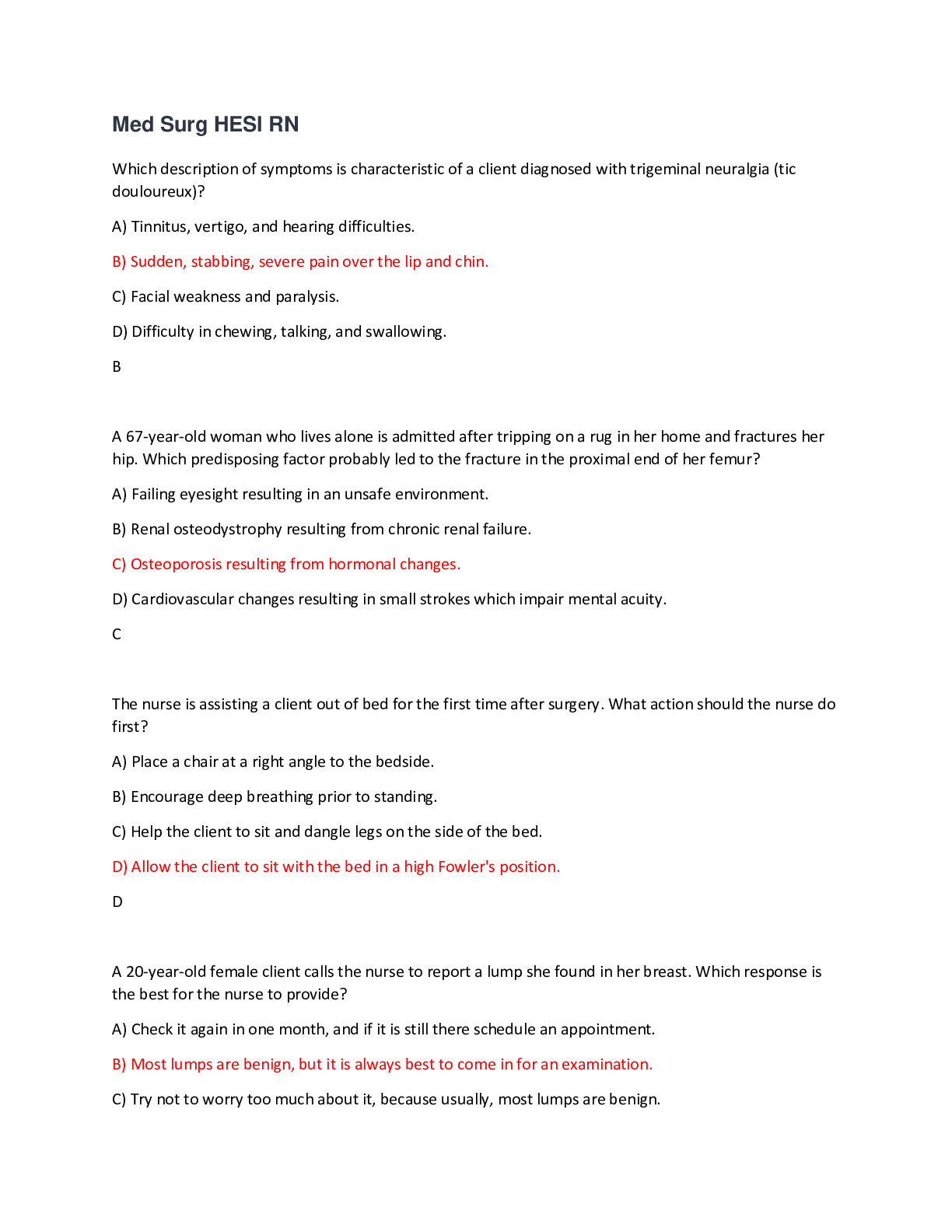
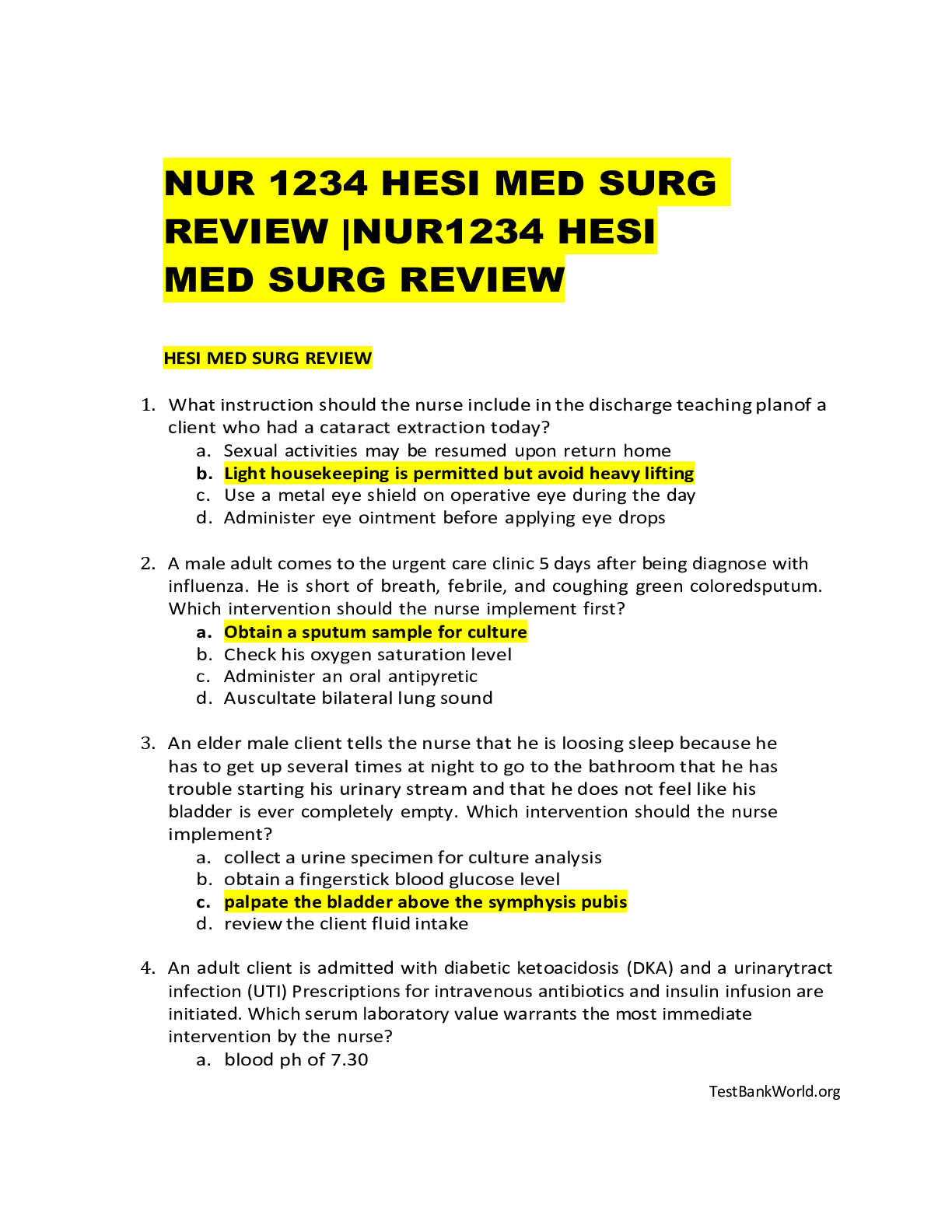


.png)
 Correct Study Guide, Download to Score A.png)

